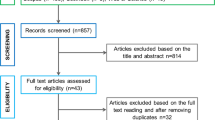Abstract
As pastoral care practitioners better understand humor they will be able to better utilize it as a tool in their work. With this in mind, the present article puts forth a possible additional explanation for the pleasure gained from humor and based on that suggests possible practical uses of humor in pastoral care settings. According to Simon Critchley, defining humor is “a nicely impossible object for a philosopher.” Hence, this article does not attempt to understand or define humor in any complete sense. It merely acknowledges the phenomenon called “humor,” and seeks to relate it, in a theoretical manner, to our existence as humans in relation to God. The article borrows from the three traditional humor theories and recasts them around truth and righteousness, proposing a fresh approach here called “righteousness relief.” That is, humor is pleasurable because, through the incongruous juxtaposition of truth and untruth, it affirms our operating norms, thus relieving us from the fear that our perception of truth and reality is not “right,” and from the fear that we are alone in it. The article then offers a few suggestions as to how this understanding might be utilized in pastoral care situations.
Similar content being viewed by others
Data availability
Not applicable.
Notes
It also encompasses the theories of Arthur Schopenhauer, Søren Kierkegaard, and, more recently, Tom Veatch, John Morreall, and others.
It should be noted that many fail to detect humor here for other reasons.
Presumably this is why so many women love their man—because “he makes me laugh.” While this is insufficient grounds for a stable relationship, the shared humor of a couple reveals shared norms.
References
Attardo, S. ed. (2014). Encyclopedia of Humor Studies. SAGE.
Barth, K. (1977). Church dogmatics (Vol. 5; G. W. Bromiley & T. F. Torrance, Trans). T & T Clark.
Beattie, J. (1776). An essay on laughter and ludicrous composition. W. Creech & E. and C. Dilly.
Berger, P. L. (1997). Redeeming laughter: The comic dimension of human experience. Walter de Gruyter.
Berger, P. L., & Luckmann, T. (1966). The social construction of reality: A treatise in the sociology of knowledge. Anchor.
Binau, B. A. (2009). Humor reconsidered: The cultivation of ‘accurate perception’ as a contribution to the Care of Souls. Pastoral Psychology, 58, 667–680.
Capps, D. (1997). Men, religion and melancholia: James, Otto, Jung, and Erikson. Yale University Press.
Capps, D. (2006). Religion and humor: Estranged bedfellows. Pastoral Psychology, 45, 413–438.
Capps, D. (2008). Laughter ever after: Ministry of good humor. Chalice.
Carr, J., & Greeves, L. (2006). Only joking: What’s so funny about making people laugh? Gotham.
Carrell, A. (2008). Historical views of humor. In V. Raskin (Ed.), The primer of humor research (pp. 303–332). De Gruyter.
Chesterton, G. K. (2009). Orthodoxy. Moody Classics. .
Critchley, S. (2002). On humour. Routledge.
Darden, R. (2008). Jesus laughed: The redemptive power of humor. Abingdon.
Davis, M. S. (1993). What’s so funny? The comic conception of culture and society. University of Chicago Press.
Feltmate, D. (2010). Springfield’s sacred canopy: Religion and humor in The Simpsons (unpublished doctoral dissertation). University of Waterloo.
Feltmate, D. (2017). Drawn to the gods: Religion and humor in The Simpsons, South Park, and Family Guy. NYU.
Freud, S. (2002 [1905]). The joke and its relation to the unconscious (J. Crick, Trans.). Penguin.
Gordon, M. (2014). Humor, laughter and human flourishing: A philosophical exploration of the laughing animal. Springer.
Gotz, I. L. (2002). Faith, humor and paradox. Praeger.
Heddendorf, R. (2008). From faith to fun: The secularisation of humor. Wipf and Stock.
Hobbes, T. (1839). Leviathan. In W. Molesworth (Ed.), The English works of Thomas Hobbes of Malmesbury (Vol. 3, Chap. 11). John Bohn.
Hutcheson, F. (1750). Reflections upon laughter and remarks upon the fable of the bees. Daniel Baxter.
Kuschel, K.-J. (1994). Laughter: A theological reflection (J. Bowden, Trans.). SCM.
Martin, R. P. (1978). Theology of Mark’s gospel. Southwestern Journal of Theology, 21(1), 23–36.
Martin, R. A. (2007). The psychology of humor: An integrative approach. Elsevier.
Morreall, J. (1983). Taking laughter seriously. State University of New York Press.
Morreall, J. (2009). Comic relief: A comprehensive philosophy of humor. Wiley-Blackwell.
O’Donnell, K. (2000). Humour: A little guide for mind, body and spirit. Lion.
O’Donovan, O. (1994). Resurrection and moral order: An outline for evangelical ethics (2nd ed.). Eerdmans.
Parrott, B. W. (1982). Ontology of humor. Philosophical Library.
Provine, R. R. (2004). Laughing, tickling, and the evolution of speech and self. Current Directions in Psychological Science, 13(6), 215–218.
Raskin, V. (1984). Semantic mechanisms of humor. Springer.
Seifrid, M. A. (2000a). Christ, our righteousness: Paul’s theology of justification. New Studies in Biblical Theology 9. IVP.
Seifrid, M. A. (2000b). Righteousness, justice and justification. In T. D. Alexander & B. S. Rosner (Eds.), Dictionary of biblical theology (pp. 740–745). IVP.
Seifrid, M. A. (2004). Paul’s use of righteousness language against its Hellenistic background. In D. A. Carson & M. A. Seifrid (Eds.), Justification and variegated nomism: The paradoxes of Paul (Vol. 2, pp. 39–74). Mohr Siebeck.
Shaftsbury, The Earl of. (1709). Sensus communis: An essay on the freedom of wit and humour. Egbert Sanger.
Southworth, J. (1998). Fools and jesters at the English court. Sutton.
Wilkens, S. (2019). What’s so funny about god? A theological look at humor. IVP.
Code availability
Not applicable.
Author information
Authors and Affiliations
Corresponding author
Ethics declarations
Conflicts of interest/Competing interests
Not applicable.
Additional information
Publisher’s Note
Springer Nature remains neutral with regard to jurisdictional claims in published maps and institutional affiliations.
Rights and permissions
About this article
Cite this article
Webster, D. Righteousness Relief: A Possible Additional Explanation for the Pleasure of Humor and Its Pastoral Implications. Pastoral Psychol 70, 557–567 (2021). https://doi.org/10.1007/s11089-021-00966-1
Accepted:
Published:
Issue Date:
DOI: https://doi.org/10.1007/s11089-021-00966-1




